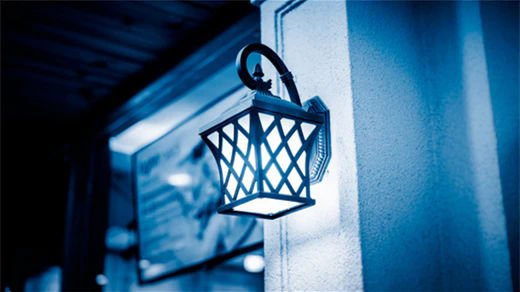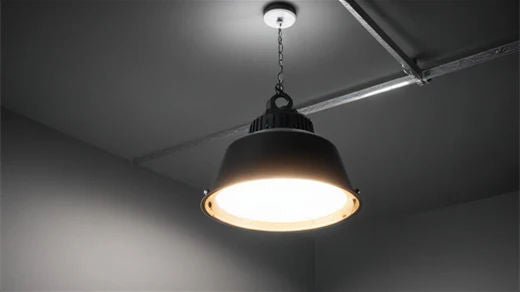1Choosing the right type of lighting is crucial for ensuring optimal visibility, safety, and energy efficiency in various settings. Two common types of lighting used for different purposes are high bay lighting and flood lights. Each has its own specific applications, advantages, and considerations. In this comprehensive guide, we will explore the characteristics, uses, benefits, and drawbacks of both high bay lighting and flood lights to help you make an informed decision for your lighting needs.
Understanding High Bay Lighting
What is High Bay Lighting?
High bay lighting is specifically designed for illuminating large indoor spaces with high ceilings, typically ranging from 20 to 45 feet. These fixtures provide bright, uniform light, making them ideal for use in warehouses, factories, gymnasiums, large retail stores, and other commercial or industrial settings.
Characteristics of High Bay Lighting
- High Lumen Output: High bay lights produce a powerful and focused light output, ensuring that even the furthest corners of a large space are well-lit.
- Wide Beam Angle: These lights often feature a wide beam angle to distribute light evenly over a large area.
- Mounting Height: High bay fixtures are typically mounted high above the ground, making them suitable for tall ceilings.
- Durability: Designed to withstand harsh environments, high bay lights are often constructed with robust materials and have long lifespans.
Advantages of High Bay Lighting
- Energy Efficiency: Modern high bay lights, especially LED variants, consume less energy compared to traditional lighting options like metal halide or fluorescent lights.
- Enhanced Visibility: The high lumen output and wide beam angle ensure excellent visibility, which is crucial for safety and productivity in industrial settings.
- Longevity: LED high bay lights have a significantly longer lifespan, reducing the frequency and cost of replacements.
- Cost Savings: The energy efficiency and longevity of high bay lights lead to substantial cost savings over time.
Applications of High Bay Lighting
- Warehouses and Factories: Providing ample illumination for large storage areas and manufacturing floors.
- Gymnasiums: Ensuring well-lit sports facilities for both participants and spectators.
- Retail Stores: Offering bright and uniform lighting in big box stores and supermarkets.
- Airports and Hangars: Illuminating large indoor spaces where precise visibility is essential.

Understanding Flood Lights
What are Flood Lights?
Flood lights are broad-beamed, high-intensity lights designed to illuminate large outdoor areas. These fixtures are commonly used for outdoor security, sports fields, building facades, and landscape lighting. Flood lights are characterized by their ability to cover vast areas with bright, even light.
Characteristics of Flood Lights
- High Intensity: Flood lights emit a powerful, concentrated beam of light to cover extensive outdoor areas.
- Weather Resistance: Designed for outdoor use, flood lights are built to withstand various weather conditions, including rain, snow, and extreme temperatures.
- Versatility: Available in a range of sizes and beam angles, flood lights can be used for different outdoor applications.
- Adjustability: Many flood lights come with adjustable heads, allowing users to direct light precisely where it is needed.
Advantages of Flood Lights
- Enhanced Security: The bright light provided by flood lights deters intruders and increases safety in outdoor areas.
- Versatile Applications: Suitable for a wide range of outdoor uses, from sports lighting to architectural highlighting.
- Energy Efficient Options: LED flood lights offer energy savings and longer lifespans compared to traditional halogen or incandescent flood lights.
- High Durability: Designed to endure harsh outdoor conditions, ensuring reliable performance year-round.
Applications of Flood Lights
- Outdoor Security: Illuminating building exteriors, parking lots, and other outdoor areas to enhance safety and deter criminal activity.
- Sports Fields: Providing bright, even lighting for night-time sports events and training sessions.
- Architectural Lighting: Highlighting the features of buildings, monuments, and landscapes.
- Event Venues: Lighting up outdoor concert venues, fairgrounds, and other large-scale events.

Comparing High Bay Lighting and Flood Lights
Key Differences
- Intended Use: High bay lights are primarily for indoor use in spaces with high ceilings, while flood lights are designed for outdoor applications.
- Mounting Height: High bay lights are mounted at significant heights indoors, whereas flood lights are typically mounted on poles, walls, or the ground to illuminate outdoor areas.
- Beam Angle: High bay lights have a wide beam angle for uniform indoor lighting, while flood lights have a narrower, more concentrated beam for targeted outdoor lighting.
- Durability: Both types are durable, but flood lights are specifically built to withstand outdoor weather conditions.
Choosing the Right Lighting
To determine whether high bay lighting or flood lights are the best choice for your needs, consider the following factors:
- Location: Identify whether the area to be illuminated is indoors or outdoors. High bay lights are suitable for large indoor spaces, while flood lights are designed for outdoor use.
- Ceiling Height: For indoor spaces with high ceilings (20 feet or more), high bay lights are ideal. For outdoor applications, consider the height and positioning of flood lights to achieve the desired coverage.
- Purpose: Determine the primary purpose of the lighting. If you need uniform, bright light for an indoor workspace, high bay lights are the best option. For outdoor security, sports lighting, or architectural highlights, flood lights are more appropriate.
- Energy Efficiency: Both high bay lights and flood lights are available in energy-efficient LED options. Consider the long-term cost savings and environmental benefits of LED lighting.
Conclusion
Both high bay lighting and flood lights have their unique advantages and are suitable for different applications. High bay lights are the perfect solution for illuminating large indoor spaces with high ceilings, providing energy-efficient, bright, and uniform light. On the other hand, flood lights are ideal for outdoor applications, offering powerful and targeted illumination for security, sports, and architectural purposes.
By understanding the characteristics, benefits, and appropriate uses of each type of lighting, you can make an informed decision that meets your specific needs. Whether you require efficient indoor lighting for a warehouse or effective outdoor lighting for security, choosing the right type of lighting will enhance visibility, safety, and overall functionality of the space.


































Leave a comment
This site is protected by hCaptcha and the hCaptcha Privacy Policy and Terms of Service apply.